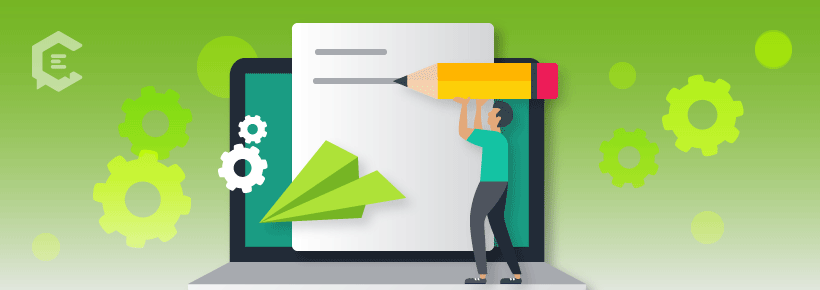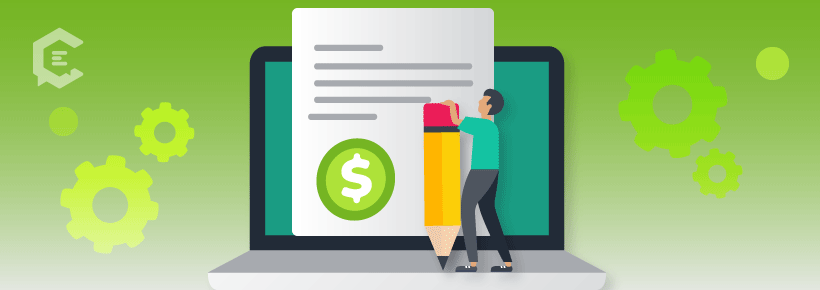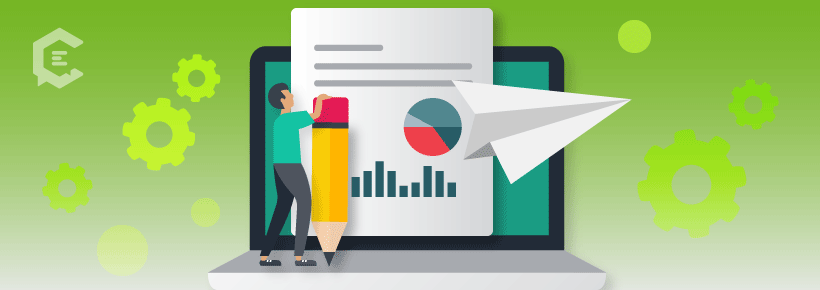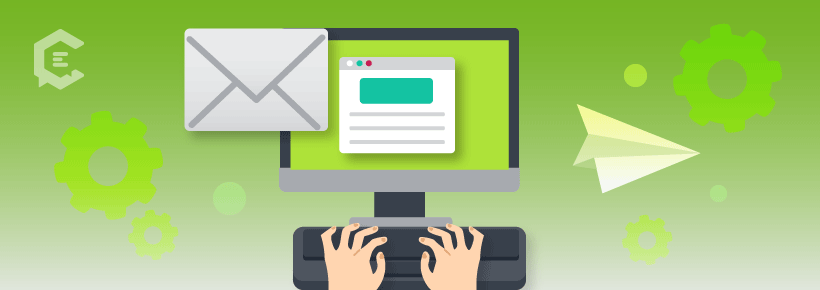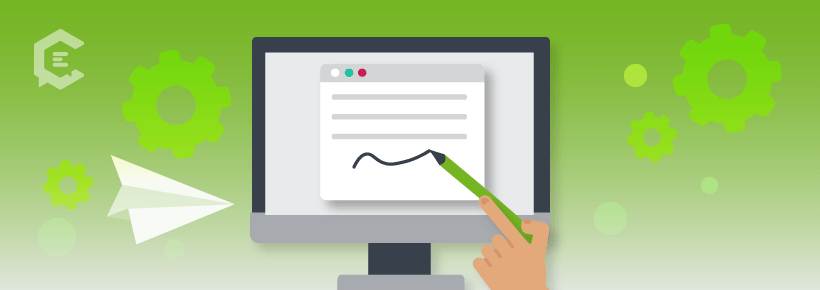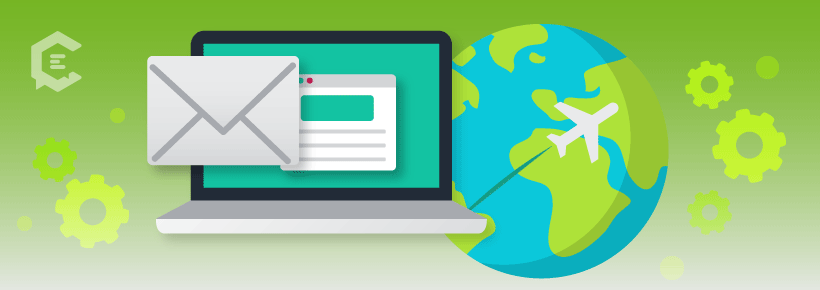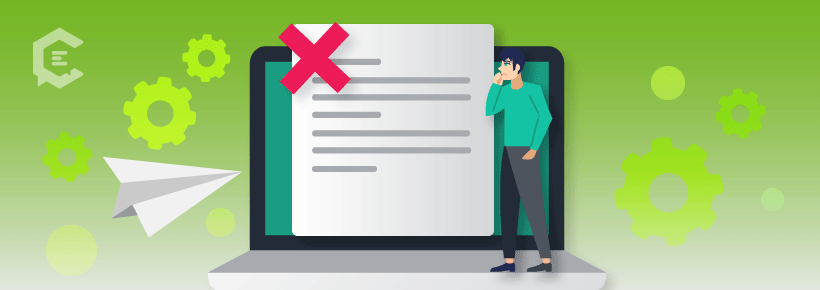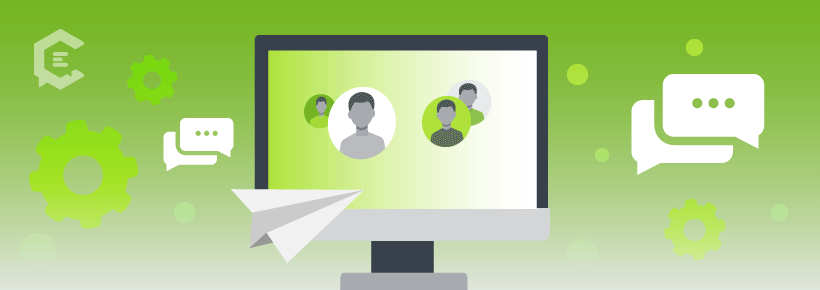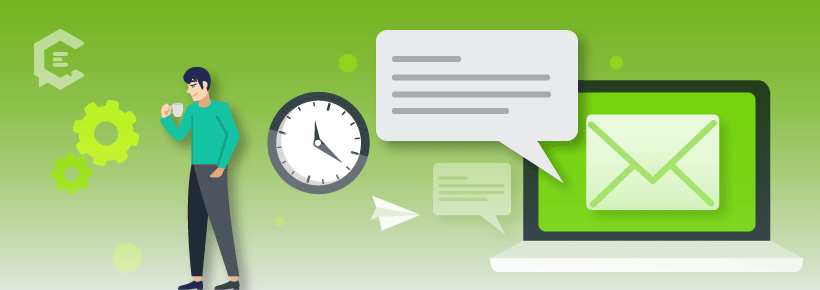Email is an essential part of modern business — no matter if you’re a content writer, a marketer, a designer or anything under the sun. Since it’s the most common form of communication for the freelancing community, understanding best practices and etiquette is necessary to attract and retain clients.
Though, hey, since you’re a wordsmith, you might think you’re already schooled on drafting messages, there may be some areas that need improvement. Or, perhaps habits you’ve developed that aren’t exactly professional — or helpful to grow your pipeline.
Here, the ultimate guide to emailing as a freelancer, from email etiquette tips to templates you can use today.
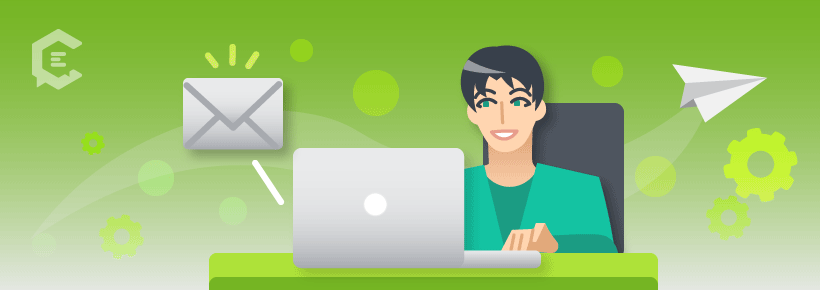
Why email etiquette is important
As executive coach and human connection expert, Holland Haiis, explains, email etiquette — or any etiquette for that matter — allows you to be seen as a professional. And if you want to build a full-time, successful and lucrative business that supports your lifestyle, being viewed as valuable is important:
Since many professionals don’t have a brick-and-mortar business — and cold calling is a thing of the past — having the skill set to write a proper email with correct etiquette is what often opens doors to a conversation and then a person-to-person meeting.
In other words: your email is your lifeline. So dedicating time to perfect it is worthwhile to streamline your efforts and protect your bottom line.
10 email etiquette tips and templates for freelancers
Much like every assignment requires various expertise and interviews, every client experience will vary. This means some of your contracts will want constant communication via email, while others will check in monthly.
Generally speaking though, there are some email types you can expect with everyone. Here are some of the most common, with template examples:
1. Cold pitch email template
What it is: You see an opportunity to develop content, rewrite their site or develop a clicky blog, but you have never connected with the person or brand before. To get your foot in the door, you need to compel a response.
Hi [NAME],
My name is [NAME] and I’m an experienced freelance content strategize and marketer. After browsing through your [COMPANY NAME]’s site, I noticed areas where your copywriting could be stronger and more compelling. I would love to help you meet your goals. Are you available at [DATE] and [TIME FRAME]? Let’s get something on the calendar!
Thanks for the consideration and look forward to chatting!
Sincerely,
[YOUR NAME]
2. Introduction email template
What it is: You’ve landed the client — go you! Now, you are getting acquainted with the team. This will be the first time you’re meeting the folks you’ll work with during the terms of your contracts, so it’s paramount to make a good digital first impression.
Hi Team
It’s nice to e-meet you! As we gear up for [PROJECT NAME], I wanted to take the time to introduce myself. I’m [NAME] and I’ve been working as a content strategist for [NUMBER OF YEARS]. My past clients have included [EXAMPLE, EXAMPLE, EXAMPLE), and I’m excited to work together to help [COMPANY’S CONTENT GOAL]. I’ll be in touch soon with next steps, and please get in touch with me via my signature below if you have any questions.
Looking forward to it!
[YOUR NAME]
3. Assignment brief email template
What it is: Your client has signed on the dotted line, and you’re mapping the workflow to ensure all deadlines are met. You want to give your freelancers the most detailed information possible, and an assignment letter is just that.
Hi [WRITER NAME],
I’m excited to have you work on the piece below for us. You’ll find a detailed assignment letter outlined, but let me know if you have any questions or concerns. Thanks for taking this on!
[WORKING TITLE]
[DEADLINE]
[3-4 PARAGRAPHS DESCRIBING ASSIGNMENT]
[REQUIREMENTS INCLUDING SOURCES OR STYLE GUIDE]
[ESTIMATED WORD COUNT]
Sincerely,
[YOUR NAME]
4. Clarification email template
What it is: After reading through an email or an assignment letter, you’re still not 100 percent sure of what your client wants. Before you put in energy, time and resources into your work, it’s important to ask for clarification. The trick here is to ensure your inquiry has examples to compare, so you and your client are on the same page.
Hi [CLIENT NAME],
Thanks for sending this information over. I’m excited to get started on [PROJECT NAME]. Before we begin, I would like to clarify some aspects of the work. See my questions below.
[BRIEF DESCRIPTION OF CLARIFICATION]
Are you looking for [OPTION 1 with link], [OPTION 2 with link] or something else?
*Repeat for as many questions you need.*
Thank you for providing more context!
[YOUR NAME]
5. Follow-up for more information email template
What it is: You’ve responded to their inquiry or assignment with some clarification questions. A few days have passed and no word. You need to get started to meet your deadline — but you don’t want to bug them. Try this approach to incite action.
Hi [CLIENT NAME],
Hope you are doing well! On [DATE] I sent an email asking for clarification on some of the details for the [PROJECT NAME]. Please see these questions copied/pasted below. Are you able to provide more context by [DATE]? If I don’t hear from you by EOD today, I’ll give you a call tomorrow to see if we can align.
Thank you!
[COPY/PASTE CLARIFICATION QUESTIONS]
[YOUR NAME]
6. Invoicing email template
What it is: For most writers, invoicing is a necessary evil of doing business. Especially since we excelled in English but not so much in math, keeping up with payments is a means to an end but not exactly a fun task. Creating a template can take away some of the stress, allowing you to copy, paste and send with every project.
Hi [CLIENT NAME],
I enjoyed working with you on [PROJECT NAME]! Please find my invoices attached to this email. My payment terms are 30 days from [TODAY’S DATE].
Let me know if you need anything else.
Thanks again,
[YOUR NAME]
7. Follow-up on payment email template
What it is: When freelancing is your full-time gig and your only income stream, late payments are more than a pain — they can make or break your ability to pay bills. That’s why your follow-up email on pending payments should be professional but also propose consequences.
Hi [CLIENT NAME],
Below you will find my email from [DATE] when I submitted [INVOICE NUMBER]. As noted, my payment terms are 30 days. In a week, we will approach that deadline, and I will begin charging [LATE FEE RATE] per day for every day past payment. Can you please provide an update ASAP?
Thanks!
[YOUR NAME]
8. Revision push back email template
What it is: Sometimes, a few edits take no time. In other instances, edits and clarifications from the client do not match what was outlined in your assignment letter. Especially if you feel the requests are unnecessary or warrant an additional fee, a professional email pushing back is essential.
Hi [CLIENT NAME],
Thank you for providing feedback on [PROJECT NAME]. Below, please find the assignment letter given to me regarding this work. As you will see, I followed the outline exactly as requested. While I would love to continue working with you, the revisions requested are more than the scope given to me at the start of the [PROJECT NAME]. I would be happy to make these revisions for an additional [FEE IN DOLLARS].
Let me know if that works for your budget and I can return the work by [DATE].
Sincerely,
[YOUR NAME]
9. Out-of-office email template
What it is: Even freelancers deserve a break from the hustle of their careers. And when you aren’t available via email, your clients need to know. An out-of-office is not only a professional tradition but it is an opportunity to showcase your personality, too.
Thanks for reaching out! I’m currently away from email from [DATE] to [DATE] while on vacation with my family in sunny Mexico. I will be disconnected during this time but look forward to connect upon my return.
Have a nice week!
[YOUR NAME]
10. Project reporting and data email template
What it is: Throughout the course of a project, it’s important to keep your client informed on progress and any data. Not only does this ensure you’re aligned but it showcases a proactive disposition.
Hi [CLIENT NAME],
Hope you are well! I wanted to share the latest information about [PROJECT NAME] for your records. We are tracking well toward [GOAL] and I’m focusing on these three deliverables this week:
-[DELIVERABLE ONE]
-[DELIVERABLE TWO]
-[DELIVERABLE THREE]
Please let me know if any of these need to be re-prioritized.
[PROJECT NAME] Report
Completed Work:
*Here, add any work that has been filed.*
Impact of Work
*Here, in numbers, share any data you may have on the work you completed.*
Thank you. Let me know if you have any questions.
Sincerely,
[YOUR NAME]
10 do’s for email etiquette
1. Respond promptly.
Especially since most industries conduct the majority of their business online, responding quickly is an expected standard. Though everyone should feel empowered to disconnect to spend time with their families and friends, freelancers should try to be responsive during their client’s normal business hours.
Amy Cooper Hakim, Ph.D., an industrial-organizational psychology practitioner and workplace expert recommends when possible, respond within the hour or within the day:
Even if you do not have the answers to all of the questions posed in an email, reply to let the sender know that you’ve received her message and to share when you will respond with complete answers.
2. Create clarity from the beginning.
Considering they are hiring you for your expertise as a writer, the recipient shouldn’t have to read your email a few times to understand it. Haiis says the goal is to be clear from the beginning — from the subject line to the body of the email:
Make it easy for them to follow the idea, story or information that you want to share. Use bullet points as this helps to keep things clear and concise. Make your paragraphs short since all of our brains are on overload with all the information we consume on a daily basis. To capture anyone’s attention they need to be able to read your email with ease.
3. Use proper spelling and grammar.
While — ahem — this should go without saying for writers, sometimes we all go a little too fast and make careless mistakes. Typos happen to even the most experienced of freelancers but they don’t put your expertise in a positive light.
Hakim urges wordsmiths to take the time to read over their work, and even invest in a service like Grammarly as an extra layer of protection:
Remember that your email is a reflection of you and of what the client can expect from your work product.
4. Do keep it short.
When writing is your thing, scribing emails is an easy task. It can also be something that you do without thought or anxiety, allowing the juices to flow and fall as they will. Though other literature-lovers will appreciate the descriptions and the colorful language, some clients will see it as rambling.
Etiquette expert, executive and author Anne Corley Baum recommends keeping it short. If you need to articulate more information than a few paragraphs, schedule a call or an in-person meeting:
As a freelancer, you want to be easily understood so that your work product is respected and attractive to potential customers. When you put too much information in an email, you often lose the attention of the reader and this can result in a missed opportunity.
5. Answer all questions.
While it may seem contrary to the advice to keep it concise, it can be seen as disrespectful if you ignore any questions in your response to a client.
As Hakim puts it, if there are three questions, they should each have a section of their own. But if there are ten? Maybe hop on a phone:
Address each part of the email to show your level of attention to detail. If you are unable to answer a particular question, state so, and share the time by which you will reply with a complete response to that question.
6. Include a signature.
Before you became a freelancer, you were employed by a company that had their own style guide for email signatures. Perhaps it was a logo, text with social handles or something even more traditional.
When you started your own business, you likely didn’t think to have a signature of your own. But why not? This only makes you look more professional, and is a free and easy task to complete. Hakim suggests this extra touch adds personality and expertise, and could go a long way in establishing a positive working relationship.
7. Make follow-ups easy for the respondent.
You sent a calendar full of ideas to your editor or client, confident they would like most of them. But it’s been a week and your email is still crickets. You want to follow up, so you consider sending a ‘Just checking in on this!’ message. It’s short and sweet, so it’s fine, right? Not so much, according to career coach and keynote speaker Carla Isabel Carstens.
Since your goal is to warrant a response, you need to make it as easy as possible for the recipient to email you back, says Carstens:
When following up on an email, re-attach any relevant files, copy and paste any necessary information, links and so on. This will save your client the trouble of digging through previous emails, therefore getting you what you need, faster. We all know what it’s like to receive a follow-up email, and grimacing to yourself while spending way too much time searching for the needed attachment.
8. Consider your format and design.
Your super talent may be a way with words — and not so much with design. Regardless though? Tiffany Dyba, a career transition coach and consultant suggests giving extra attention to the format of your email. Or more to the point: ensure your fonts, colors, size and structure are appropriate for business interactions.
Generally speaking, she says Calibri, Verdana and Arial at a 12-point font are safe. As for the shade? Repeat after Dyba: save colorful fonts for emails to your friends and family, not for clients.
9. Anticipate your audience.
Your friends may think you’re one of a kind since you have a snarky, happy and sometimes quick-witted sense of humor. This is a great quality to have — but one that can easily be misconstrued via email.
Dyba says it’s important to really pay attention to word choice and how you are coming across digitally before hitting ‘send.’ “Avoid using negative words in the subject line,” she shares.
This can be as easy as saying ‘Change to project timeline’ rather than ‘Delay in project timeline.’ If you’re making a joke — but you don’t know your client well enough yet — save it for when you’re friendly and you know they’ll get the right message.
10. Use an out-of-office.
When you’re on vacation, at a conference or otherwise unavailable, your clients should be alerted to your absence. In addition to giving them a personal head’s up via email, an out-of-office responder is recommended by Dyba, too:
Managing expectations is extremely important: especially as a freelancer working with multiple clients at a time. You have deadlines to manage, and people are counting on you so it is important to let them know when they can expect to hear from you again. This way, any time sensitive or important conversations or information that needs to be shared can happen ahead of you being away from your computer.
10 don’ts for email etiquette
1. Be lazy.
You have a to-do list that spans the entire length of your desk, it’s noon, and you haven’t even made a dent. Ugh! Because emails can sometimes feel like a no-brainer activity, powering through them ASAP makes you feel productive. But if they are ripe with typos, spelling mistakes, grammar issues, or even misspelling a client’s name, it’ll make you appear lazy.
“Don’t press send before reading your email out loud,” Hakim recommends. “Take a moment to read the message aloud to ensure that it comes across as you intend.” If there is a very important email you’re about to send — say a pitch to an editor on your byline bucket list or a promising new client — Hakim suggests taking a break before reading the message aloud.
“This allows you to look at the message with fresh eyes and may help you to catch something that does not read as you intend,” she adds.
2. Write anything you do not want repeated or forwarded.
A grim reality of email communications is that nothing is sacred. Anything can be forwarded to anyone, and often, without your permission. Unlike the spoken word, which you can limit to whoever is in the room or on the call, written language can spread far and wide — and fast.
That’s why Hakim says not to send anything you do not want repeated:
It is vital that any content that you post is something you are comfortable having others see. Encrypt messages or use other security methods to protect confidential material.
3. Use all caps.
For some, this may go without saying. For others, it could be an old practice or habit you’ve yet to kick. No matter the context, situation or purpose, Baum says freelancers should refrain from using all capital letters, since it is often perceived as yelling or anger:
Freelancers are often creative people and it might seem unique or creative to use all caps. Some people even think it’s catchy and cute to use all small letters or no punctuation. Each of these styles create a challenge for the reader and since email is read, not heard, and the tone of the email is left to the perception of the reader. Don’t give them reason to misunderstand the message you are trying to communicate by trying to be cute or creative with your font.
4. Use email for difficult conversations.
There is a time and a place for every business interaction, and some conversations are better spared offline. Here’s the deal, according to Baum: difficult discussions challenge both parties to use specific language and be careful of their words.
When you are working with a client who doesn’t seem to be on the same page you are, suggesting a phone call is a better avenue, rather than trying to dictate the situation via typing, says Baum:
Especially as a freelancer, your reputation is based upon your interactions with others and the quality of work you deliver to them. Pick up the phone and schedule the meeting. Not only is it easier to have conversations of this nature in person, it also demonstrates maturity and courage: great characteristics for a freelancer.
5. Use text abbreviations.
TLDR? LOL? When you’re texting with your best friend or partner, these abbreviations (and even corresponding emojis) are totally fine. But when you’re still getting to know the client and their preferences, it’s best to steer clear of anything that could make you appear immature or unclear, according to Baum. “Don’t let ‘text talk’ make your emails less professional. You are always safe sticking to the professional side,” she adds.
In the future, you may become more comfortable with your contact and use some short-hand when you’re messaging. The point is to mind your manners until you feel ready to have a personal interaction.
6. Try to make friends.
While Haiis says, no, you’re not writing to the Queen of England, there is a formality to business which needs to be followed. You may feel like you and your potential or current client could be friends in a different situation, but until they aren’t paying you anymore, crossing those boundaries is a tricky situation. Your emails should only reflect a professional relationship, and not make it sound like you’re trying to become chummy.
As Haiis says:
Remember, you’re trying to build business relationships, not hang out at the beach playing volleyball. It’s best not to try to be funny, or clever with a stranger, and instead stick to the facts and the intent of your message. There’s always time to show your personality as the relationship develops.
7. Write a novel.
Finally publishing a book one day is on your career bucket list. But, the time and the place for penning the next best-seller isn’t, ahem, your email. As Haiis says, we all agree you’re amazing and you’ve got a lot of great information to share — but not here. Not now.
“Leave clients wanting more,” she continues. “Give them the desire to schedule a call or a meeting. Unfortunately that won’t happen if you give us every detail in this first email.”
8. Don’t reply to all.
It’s one of those cringe-worthy experiences that has happened to all of us: we meant to reply to one person, but ended up including everyone on the chain. We’ve also all been part of the group that was spammed because someone couldn’t remember to take off unnecessary emails.
In addition to being annoying, Dyba cans it can be stressful and clog your inbox:
It can also create many sidebar conversations, and your original email with original information needed is lost in a sea of other emails.
To ensure you are being thoughtful and timely with your response, Dyba suggests pausing, and taking a moment to reply to the original sender and acknowledge their email. “It is fine if you don’t have a response or answer to their question straight away, however letting them know you will get back when you have the information needed is the most appropriate way to handle this,” she adds.
9. Think an email is enough for an emergency.
While you may think email marketing etiquette is all about digital conversation, Carstens says that’s only part of it. In fact, being an integral part of your client’s goal-mapping is knowing when to take the discussion offline. This is especially true in a critical situation, she notes:
Don’t send time-sensitive emails without pairing it with a quicker form of communication, such as a Slack or phone call. It’s unfair to expect the recipient to receive your message in time, so give them a heads up. Not everyone is glued to their inbox.
10. Reply instantly, when you’re angry or upset.
There’s nothing worse than a Friday evening email from an angry client who is asking for unreasonable demands and revisions… ASAP. No matter how long or short you’re in the freelancing game, feeling frustrated by your work is bound to happen. But taking a pause to gather yourself and collect your emotions will ensure you remain professional, according to Dyba.
Even if the natural response is to reply instantly with passion and enthusiasm, it doesn’t paint you in the best light, says Dyba:
Let yourself process what you just read, and why it makes you upset. Think about potential solutions to the issue and how you can come ready with alternate options to ensure everyone is happy and productive. It might even be worth it to have an objective third party read your email to ensure it sounds polished and professional.
Save energy on your email strategy
Email etiquette is just the beginning. You also need to have a sound email marketing strategy in place to be effective. Working with expert email writers can help you scale faster while also improving content quality. Connect with one of our strategists if you want to elevate your email marketing to the next level.
